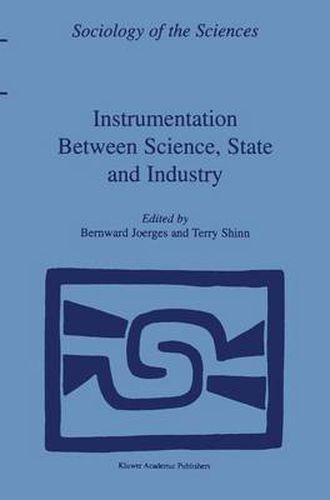Readings Newsletter
Become a Readings Member to make your shopping experience even easier.
Sign in or sign up for free!
You’re not far away from qualifying for FREE standard shipping within Australia
You’ve qualified for FREE standard shipping within Australia
The cart is loading…






This title is printed to order. This book may have been self-published. If so, we cannot guarantee the quality of the content. In the main most books will have gone through the editing process however some may not. We therefore suggest that you be aware of this before ordering this book. If in doubt check either the author or publisher’s details as we are unable to accept any returns unless they are faulty. Please contact us if you have any questions.
these. In this book, we appropriate their conception of research-technology, and ex tend it to many other phenomena which are less stable and less localized in time and space than the Zeeman/Cotton situation. In the following pages, we use the concept for instances where research activities are orientated primarily toward technologies which facilitate both the production of scientific knowledge and the production of other goods. In particular, we use the tenn for instances where instruments and meth ods* traverse numerous geographic and institutional boundaries; that is, fields dis tinctly different and distant from the instruments’ and methods’ initial focus. We suggest that instruments such as the ultra-centrifuge, and the trajectories of the men who devise such artefacts, diverge in an interesting way from other fonns of artefacts and careers in science, metrology and engineering with which students of science and technology are more familiar. The instrument systems developed by re search-technologists strike us as especially general, open-ended, and flexible. When tailored effectively, research-technology instruments potentially fit into many niches and serve a host of unrelated applications. Their multi-functional character distin guishes them from many other devices which are designed to address specific, nar rowly defined problems in a circumscribed arena in and outside of science. Research technology activities link universities, industry, public and private research or me trology establishments, instrument-making finns, consulting companies, the military, and metrological agencies. Research-technology practitioners do not follow the career path of the traditional academic or engineering professional.
$9.00 standard shipping within Australia
FREE standard shipping within Australia for orders over $100.00
Express & International shipping calculated at checkout
This title is printed to order. This book may have been self-published. If so, we cannot guarantee the quality of the content. In the main most books will have gone through the editing process however some may not. We therefore suggest that you be aware of this before ordering this book. If in doubt check either the author or publisher’s details as we are unable to accept any returns unless they are faulty. Please contact us if you have any questions.
these. In this book, we appropriate their conception of research-technology, and ex tend it to many other phenomena which are less stable and less localized in time and space than the Zeeman/Cotton situation. In the following pages, we use the concept for instances where research activities are orientated primarily toward technologies which facilitate both the production of scientific knowledge and the production of other goods. In particular, we use the tenn for instances where instruments and meth ods* traverse numerous geographic and institutional boundaries; that is, fields dis tinctly different and distant from the instruments’ and methods’ initial focus. We suggest that instruments such as the ultra-centrifuge, and the trajectories of the men who devise such artefacts, diverge in an interesting way from other fonns of artefacts and careers in science, metrology and engineering with which students of science and technology are more familiar. The instrument systems developed by re search-technologists strike us as especially general, open-ended, and flexible. When tailored effectively, research-technology instruments potentially fit into many niches and serve a host of unrelated applications. Their multi-functional character distin guishes them from many other devices which are designed to address specific, nar rowly defined problems in a circumscribed arena in and outside of science. Research technology activities link universities, industry, public and private research or me trology establishments, instrument-making finns, consulting companies, the military, and metrological agencies. Research-technology practitioners do not follow the career path of the traditional academic or engineering professional.